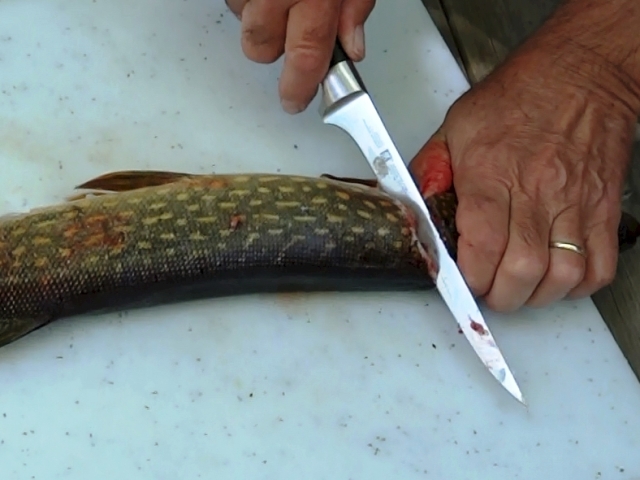My father told me that there was always “the right tool for the right job.” A wrong or inappropriate tool always leads to a poor result at best. And an unfortunate accident at worst. I learned that lesson the hard way…
WARNING: This article contains graphic images of fish filleting that some readers may find disturbing.
In my book, Filleting Freshwater Game Fish: Northern, Walleye, Bass and Bluegill, I have dedicated the very first chapter to knives. Why? Well, when it comes to filleting, the right tool is essential to getting the job done well! What sets a fish filleting knife apart is its blade, and a god blade is crucial to getting the job done right.
(This page may contain affiliate links. Read our disclosure about affiliate links.)
If you have filleted as many fish as I have, you will eventually have access to and the opportunity to use a variety of different knives. Sooner or later, you are bound to find one brand that works best for you.
Over the years, I have tried numerous brands of filleting knives (Normark, Rapala, Wüsthof, Zwilling J.A. Henckels, and Chicago Cutlery, to name just a few of the dozens of choices out there) and found them all to be useful. I certainly would not “dis” any of them, as they all have a place and purpose in my personal collection.

My passion for cooking however – as well as my years spent in restaurant kitchens – has led me to purchase a single brand of knife for a plethora of purposes: Henckels.
Henckels Knives
My first 9″ chef knife and sharpening steel were purchased way back in 1975 – making them now almost 50 years old. They are still like brand new… My point is this: a good knife is a great investment and, treated well, will last a lifetime. I take very good care of my knives.
I’ll be the first to say that Henckels knives are not inexpensive, by any stretch of the imagination. The 7″ fillet knife I mention below is now almost double what I paid for mine. But as I said, if taken care of properly, it will definitely last a lifetime.
My Recommendations
I have included some links in this article to the equipment that I have mentioned in my book; I also use these same knives both at home and while fishing in the Northwoods. If you’re not sure where to begin, try the 5.5-inch fillet knife first, as it is a bit easier to handle and a tad less expensive. Once you become more comfortable with the filleting methods, you can try the 7-inch fillet knife.
Many fishermen I have talked with obviously have their own preferences; they often prefer a six-inch blade over the seven-inch that I suggest. They also tend to shy away from Henckels because of the price. I understand that. But no matter what brand or blade-length you ultimately decide upon, keep one thing in mind: the old adage: “you get what you pay for” still rings true when purchasing a knife. Get a good quality knife, make certain to keep it clean and sharp, and it will serve you well and long.
I’ll see you On the Lake.
R. Karl